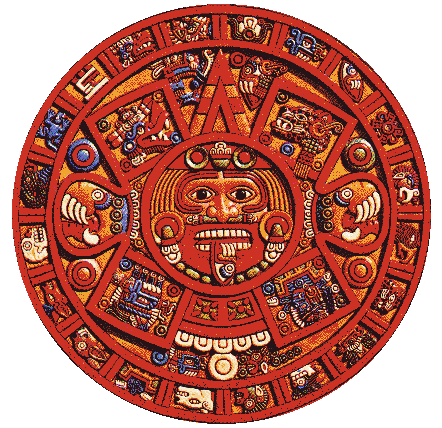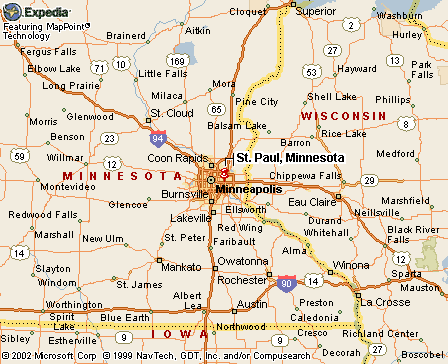|
|
Canku Ota |
|
|
(Many Paths) |
||
|
An Online Newsletter Celebrating Native America |
||
|
April 20, 2002 - Issue 59 |
||
|
|
||
|
Native Knowledge |
||
|
by Nancy Ngo
Pioneer Press
|
||
|
credits:
Mayan Calendar
|
 ST.
PAUL - When the world was without clocks, calendars and computers,
Incan tribes measured time and space with colored strings. Some of
the pieces were woven together and had knots tied along the way to
represent space and numbers. ST.
PAUL - When the world was without clocks, calendars and computers,
Incan tribes measured time and space with colored strings. Some of
the pieces were woven together and had knots tied along the way to
represent space and numbers.
The equinox and the position of stars could be measured under this system — even birthdays. The ancient system was today's version of floppy discs. "It contained any data that you could record numerically," said Ben Blackhawk, a math teacher at Providence Academy in Plymouth. He was one of many presenters Saturday who demonstrated how American Indians have made significant contributions to science and math during the second annual American Indians in Science at the Science Museum of Minnesota. "The goal of it is to allow people to meet and learn from scientists from the American Indian community," said Sarah Gardner, public relations coordinator. "It's a really fun way to see how people incorporated their culture into science." In addition to intertribal science and math technologies, demonstrators' displays included how to clean eagle feathers, pottery making, traditional medicine theories, the aerodynamics of tepees and Midwest fossils. While sharing his science studies with the thousands of visitors who drifted through the museum Saturday, Blackhawk also saw the day as an opportunity to get American Indian students interested in science and math, a nontraditional field for members of his community. Blackhawk, along with Jim Rock, a science instructor at Wayzata High School, teach a Native American Math and Science Summer Camp at the University of Minnesota every year. From the Incan string system and the Mayan calendar to the Lakota color system, he said many tribes figured out math and science in ways that were different from European cultures. But the lessons of time and space are the same in most cases. Rock said the class provides an opportunity for students to consider alternative ways of learning about science outside of what is taught in traditional classrooms. "The goal is to make sure as native people, we don't lose our culture. We can have engineering degrees and keep learning from our elders. We're trying to build a bridge," Rock said. Mary Beth Carpenter, an earth science teacher at Heart of the Earth School in Minneapolis, hoped Saturday's event would allow her students to meet other American Indian scientists. One of her students, 9th-grader Sasha Weyaus, displayed her class project where students identified fossils excavated from Milbank, SD Weyaus said she first took the class because it was a requirement. But the project that taught her how to distinguish shark and fish fossils, as well as Saturday's science fair where she met many role models, has made the learning seem less of a task. "Now I think it's cool," she said. "I'm learning a lot." FOR MORE: |
|
|

|
www.expedia.com |
|
|
||
|
|
||
| Canku Ota is a free Newsletter celebrating Native America, its traditions and accomplishments . We do not provide subscriber or visitor names to anyone. Some articles presented in Canku Ota may contain copyright material. We have received appropriate permissions for republishing any articles. Material appearing here is distributed without profit or monetary gain to those who have expressed an interest. This is in accordance with Title 17 U.S.C. Section 107. | ||
|
Canku Ota is a copyright © 2000, 2001, 2002, 2003 of Vicki Lockard and Paul Barry. |
||
 |
 |
|
|
The "Canku Ota - A Newsletter Celebrating Native America" web site and its design is the |
||
|
Copyright © 1999, 2000, 2001, 2002, 2003 of Paul C. Barry. |
||
|
All Rights Reserved. |
||